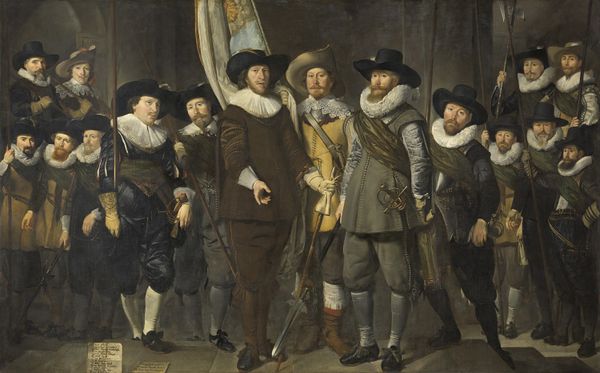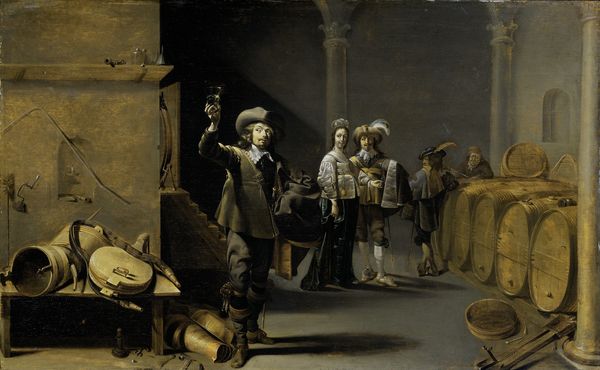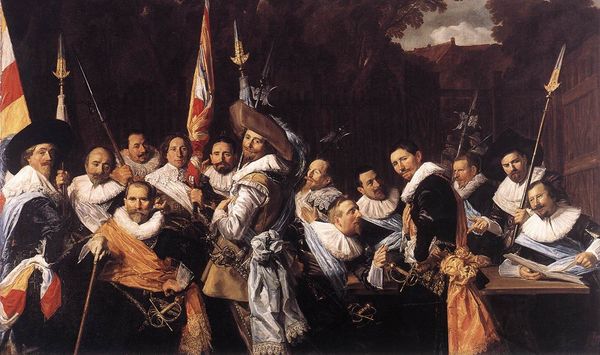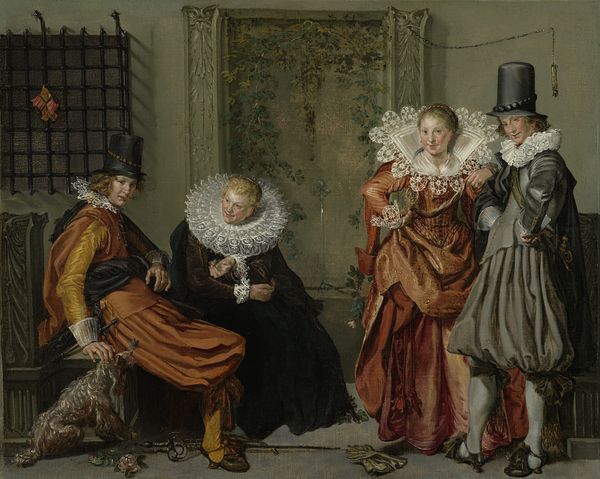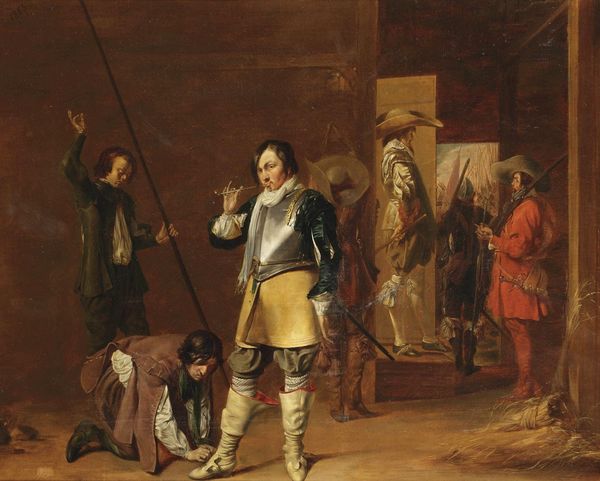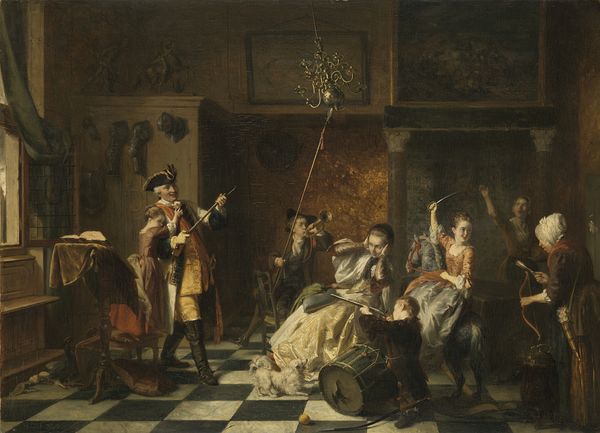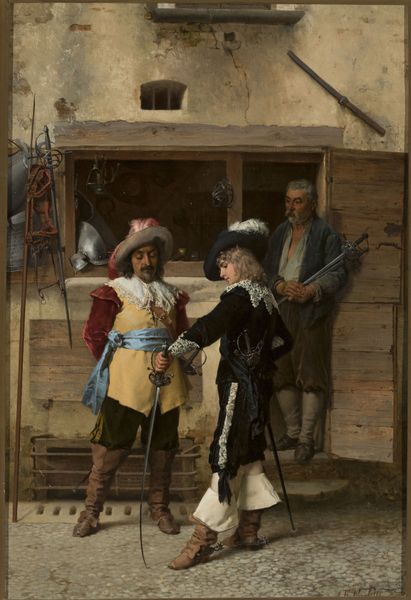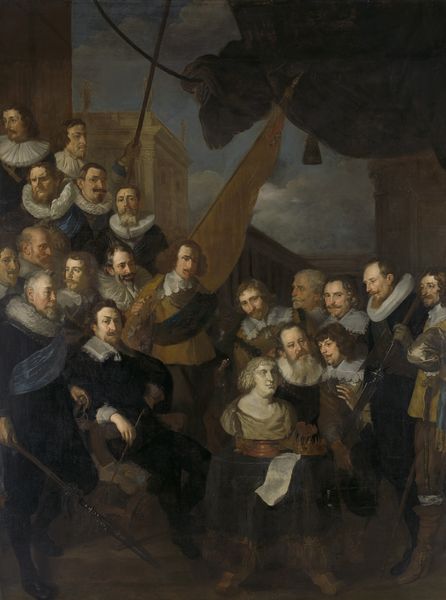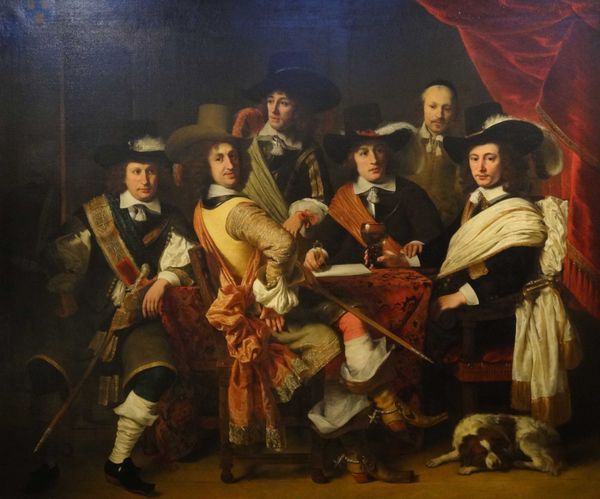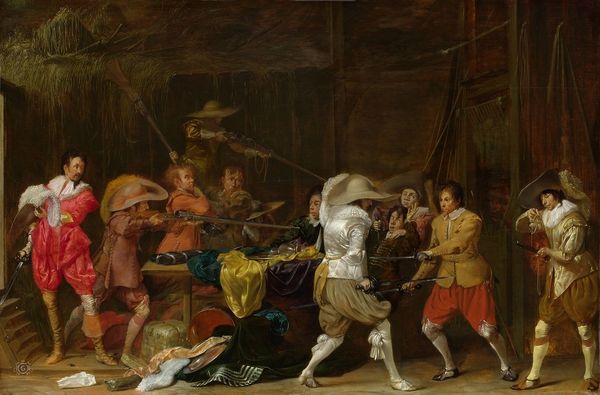
Militia Company of District VIII under the Command of Captain Roelof Bicker c. 1640 - 1643
0:00
0:00
bartholomeusvanderhelst
Rijksmuseum
painting, oil-paint
#
portrait
#
baroque
#
dutch-golden-age
#
painting
#
oil-paint
#
figuration
#
oil painting
#
group-portraits
#
genre-painting
#
history-painting
#
realism
Dimensions: height 235 cm, width 750 cm
Copyright: Rijks Museum: Open Domain
Editor: Here we have "Militia Company of District VIII under the Command of Captain Roelof Bicker," an oil on canvas painted around 1640-1643 by Bartholomeus van der Helst, housed here at the Rijksmuseum. The scale of the work is striking! All these figures packed together, with a flurry of action and garments. How do you begin to interpret a painting with such a complex composition? Curator: The visual dynamism is immediately apparent. Van der Helst masterfully manipulates light and shadow to guide the viewer's eye. Note the use of chiaroscuro: How does the sharp contrast between light and dark areas affect the overall impact of the painting? Editor: It really creates a sense of depth, pushing some figures forward while others recede into the background. Is it trying to emulate a specific classical idea? Curator: The artist demonstrates an interest in capturing the texture and sheen of the fabrics and armour using colour and light, particularly the rendering of whites. Focus on the materiality—the very substance of the paint itself—and its ability to convey the sumptuousness of the subjects’ garments and gear. How might these stylistic choices reflect on the intended audience and the painting's purpose? Editor: So it’s as much about the display of wealth and status as it is about the militia itself? Is it more "portrait" than it is history painting? Curator: Precisely. Van der Helst seems less interested in historical narrative and more focused on presenting a specific social order through pictorial form. What structural elements—lines, shapes, forms—do you think contributes to this? Editor: The way everyone is neatly arranged, with Captain Bicker as a strong vertical element dead-center. I’m starting to see how every part contributes to that visual statement of authority and affluence. Curator: Indeed. Understanding the interplay of these elements, both material and compositional, gives us a richer sense of the painting’s significance beyond its immediate subject. Editor: Absolutely! Now, considering all the ways van der Helst employs all his visual devices to give shape to the theme, it opens up a new way of seeing it beyond just being a historical piece. Curator: Agreed, it reveals the intricate connections between art, society, and visual language, enriching our viewing experience.
Comments
rijksmuseum about 2 years ago
⋮
This civic guard painting is a substantial 7.5 metres wide and almost filled an entire wall in the large hall of the Kloveniersdoelen. Van der Helst did not line up the thirty militiamen in a static row, but positioned the ones with the lightest coloured clothing in the front at regular intervals. The painter included himself in the group, at the far left.
Join the conversation
Join millions of artists and users on Artera today and experience the ultimate creative platform.
